
5 things to consider before buying a paintball CO2 tank

Paintball equipment comes in a large variety of options, it can be overwhelming for new players unsure of where to start. In paintball, like most hobbies, it’s best to start with the budget friendly equipment and upgrade as you gain more experience.
Before we begin, you'll want to call your local paintball park and be sure that CO2 is available for purchase in your area. If you're playing here at Urban War Zone or any paintball park in Houston, Tx area, you might find that CO2 is harder to purchase in 2025 than it used to be. Urban War Zone does carry CO2 and CO2 tanks. With that out of the way, let's jump in!
1. Standard paintball CO2 tank sizes
Your air system is the lifeblood of your gear. While carbon dioxide (CO2) is not as widely used as it once was, it is still the cheapest propellant you can buy to power your paintballs down range. As a player, it's essential to understand the key aspects of CO2 for paintball.
Non-refillable
Non refillable cartridges are not recommended except in special applications like in a pistol-like paintball marker or a stock class pump marker. Disposable cartridges shoot the lowest number of shots per use and are the most expensive to buy per ounce at 83.5 cents per ounce.
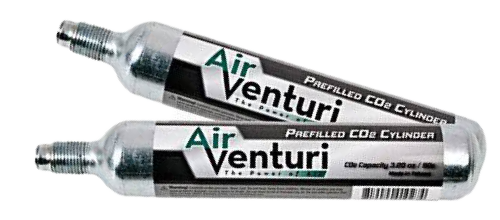
12 gram:
The original ‘paintball air tank’. Great for old school stock class markers and single-handed magfed paintball markers.90 gram:
These tanks have very few practical uses in paintball. However, large manufacturers like Kore Outdoor (formerly G.I. Sportz) continue to produce and sell them to unsuspecting new players under the brand name JT Sports. 90 gram cartridges are expensive, wasteful and require a special adapter (sold separately) to use. We do not recommend you purchase these products and avoid manufacturers like Kore Outdoor.
Refillable
Refillable CO2 tanks range in size from 9 oz to 24 ounces and cost less than 50 cents per ounce to refill a tank as of 2023.

9 oz:
The 9 oz tank is the smallest refillable bottle on the market. Short and light, 9 oz tanks are great for younger kids. 9 oz tanks are similar in shape and size to 90 gram cartridges but provide almost 3 times the shots. Not recommended for teens or adults.12 oz:
The 12 oz tank is the smallest refillable tank we recommend for most players. 12 oz bottles are shorter and lighter than a 20 oz, but provide more shots than a 9 oz bottle. 12 oz tanks are easy to carry which makes them great for young teens or adults who want a lighter setup.16 oz:
The 16 oz tank is the oddball of mix. They have a large diameter like a 20 oz bottle, but are short like a 9 oz. 16 oz tanks are great for older teens or adults who want a shorter setup. Good luck finding one in a local paintball store!
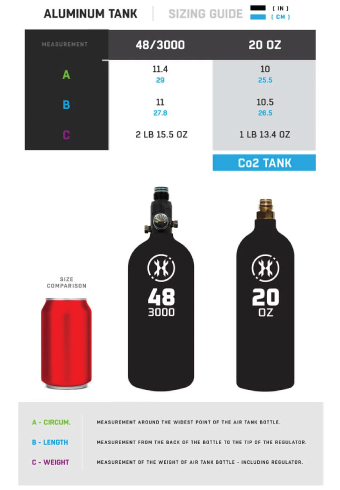
20 oz:
The trusty 20 is the most common paintball CO2 tank sold. 20 oz tanks hold enough CO2 for most players to get through a full day of play without a refill. They are great for older teens and adults who don’t mind a longer setup.24 oz:
The largest of the refillable CO2 tanks, 24 oz tanks hold enough CO2 for heavy trigger pullers to get through an entire session without a refill. 24 oz tanks are large and heavy, which can be a problem. Players should consider purchasing a remote line rather than mounting the bottle directly on the marker.
2. CO2 tank accessories for paintball
Anti-siphon tube
Modern paintball markers are designed to operate using gaseous CO2. However, paintball CO2 tanks hold CO2 in liquid form. The anti-siphon tube is designed to solve that problem.
When liquid CO2 is released from the tank, it changes into gas within a fraction of a second. Although the transition is rapid, it's not instantaneous. If liquid CO2 enters your marker it can interfere with operation. It is also corrosive and will cause water condensation to form which can lead to rust and damage to your gear.
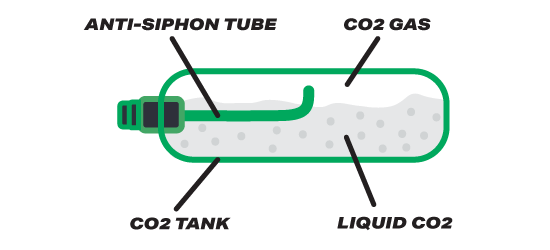
The anti-siphon tube is an accessory players add to draw in only the gas form from the bottle. The anti-siphon tube acts like a snorkel, strategically drawing gas from the top of the bottle and leaving the liquid undisturbed at the bottom.
Anti-siphon tubes are only effective when the tank is oriented in a horizontal position. When the bottle is in a vertical position, the anti-siphon tube becomes a siphon tube, drawing liquid CO2 into the marker.
Expansion chamber:
An expansion chamber is a reservoir that stores a charge of CO2 in its gaseous state. Expansion chambers add more internal volume for liquid CO2 to expand into gas, which serves as a buffer and prevents the marker from running low on propellant while shooting at high rates of fire.Thread saver:
The valves on most paintball CO2 tanks are made from brass. A thread saver screws onto the top of the bottle and prevents any damage to the soft threads while the tank is being stored or transported.On-off switch:
On-off switches are a great addition to any marker using CO2. Removing a pressurized bottle from your marker can ruin the soft threads, break the fragile o-rings, and waste CO2. On-off switches use a retractable pin to depressurize the marker for safe and easy removal without damage.
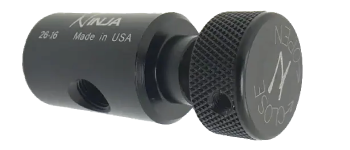
Remote line:
Remote lines allow players to put the bottle in a vest, backpack or belt carrier and connect it to the marker with a long coiled tube. Most remote lines include an on-off switch which makes them a great value. Remote lines are perfect for long adventures in the woods.
3. Paintball marker compatibility
Paintball CO2 tanks are most compatible with entry level mechanical paintball markers. High performance paintball markers that use sensitive electronics do not work with CO2 tanks for paintball. Be sure to check your manual for compatibility prior to using a CO2 in your paintball marker.
4. Where to refill your paintball CO2 tank
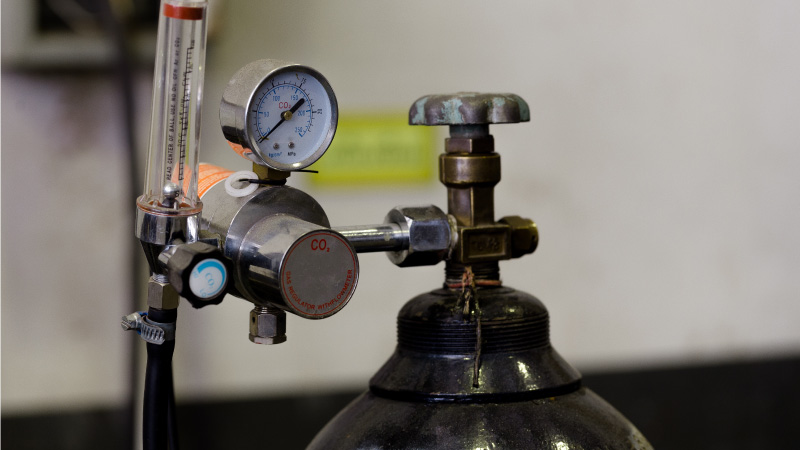
While filling a CO2 tank is relatively safe and easy to do, it is still recommended to visit a respectable paintball field or store to ensure the refill is done properly. CO2 is not as available as it was in the past, so call ahead to make sure the store has CO2 available for purchase.
Alternatively, welding supply or aquarium stores may be able to provide refills if a local paintball park is not an option. Be sure to call ahead to make sure they have experience filling CO2 tanks for paintball.
Maintaining your CO2 for lasting use
The components of a paintball CO2 tank are simple and there aren’t many serviceable parts.
o-rings
Tank o-rings can be easily swapped out if they are damaged and generally only cost $1-2 for a set.
Burst disks
Burst disks are designed to safely vent the pressure in the tank if it exceeds safe levels. The most common cause for burst disk failure is usually temperature related, such as leaving the tank in a hot car for too long.

A failed burst disk can be easily replaced with a new one for about $10.

Recertification
Bottles require testing and recertification every 5 years. Unfortunately, the cost of recertification is usually more expensive than purchasing a brand new bottle. We recommend discarding old tanks and buying new rather than recertifying.
5. To sum it up…
CO2 tanks are budget friendly, low maintenance and meet the minimum performance requirements for many entry level markers. CO2 bottles are great for many mechanical markers, but will not work well with high performance electronic markers.
If you're willing to spend a few extra dollars, you should consider buying a compressed air tank for paintball. Read our blog post to get informed: Know before you buy: Compressed Air Tank For Paintball
